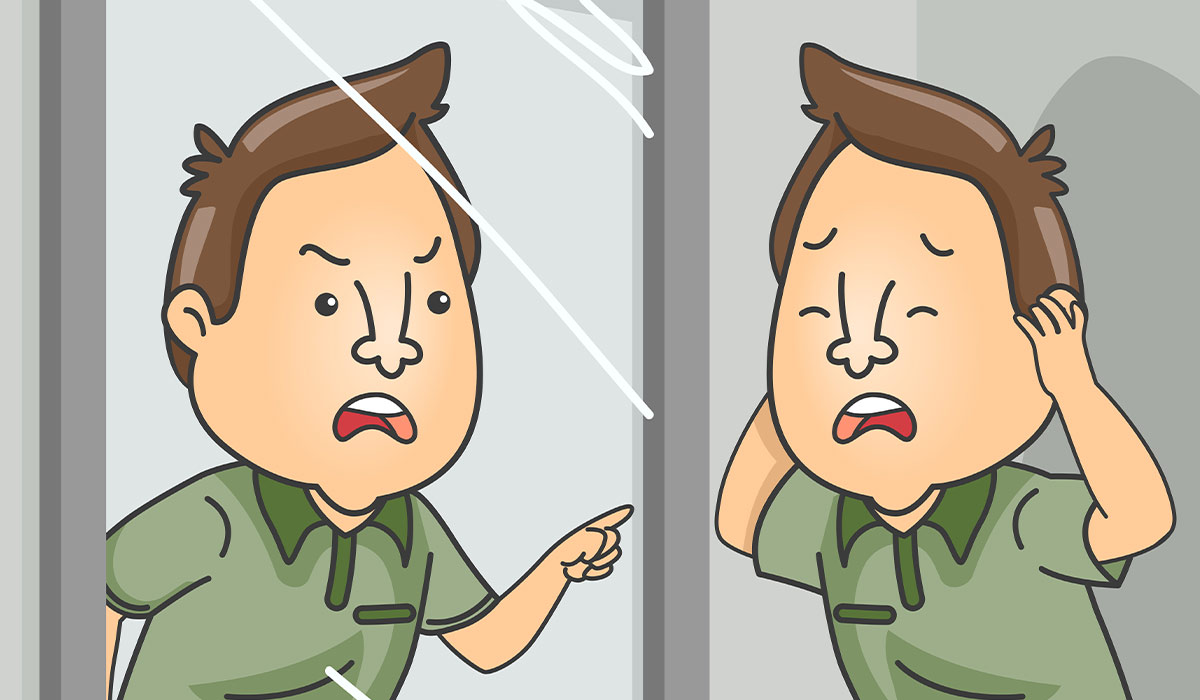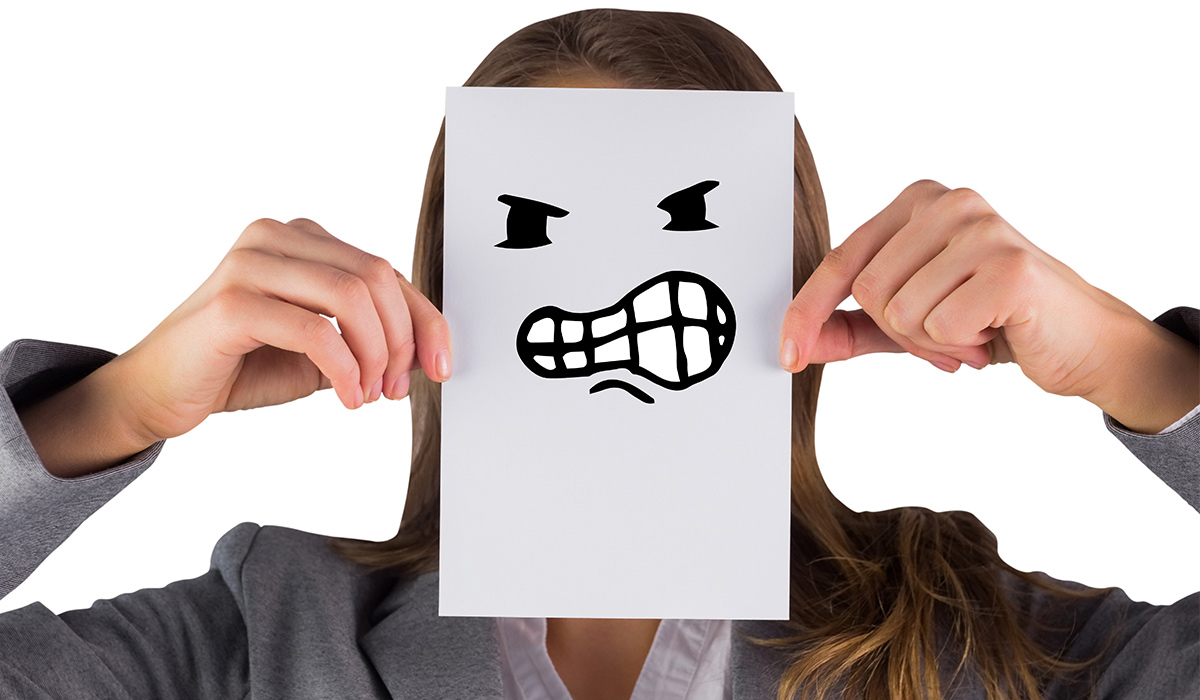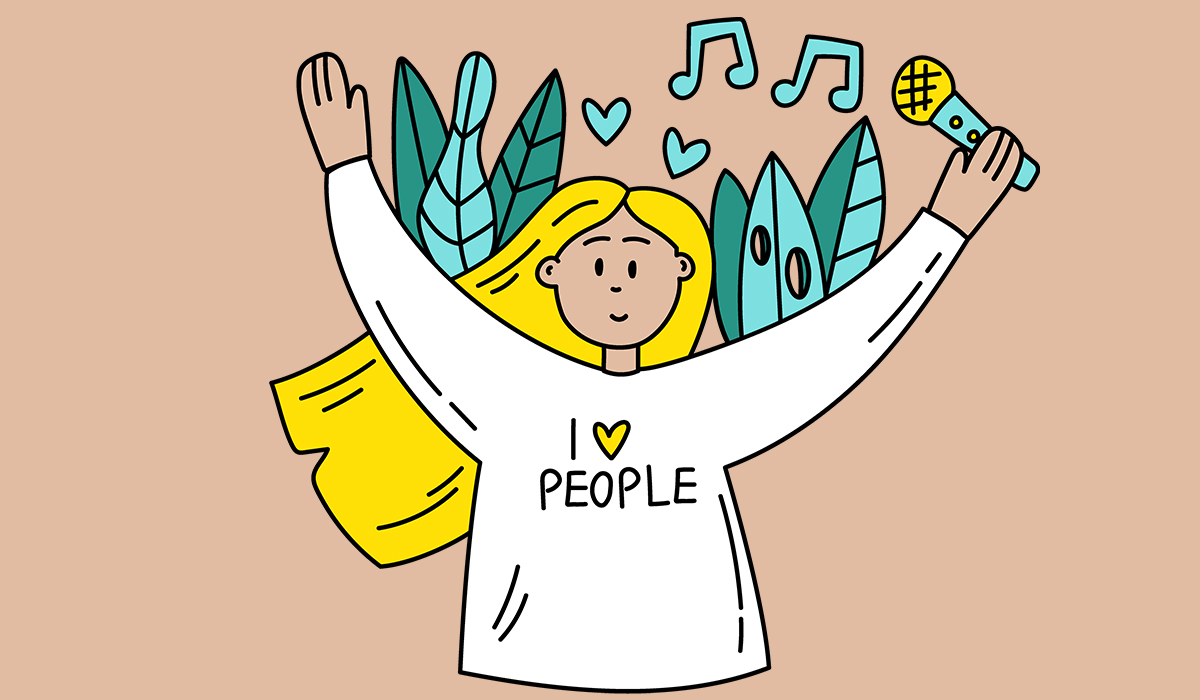Bipolar disorder (BD) refers to people who suffer from mood disorders that occur in sequences. Depressive, manic/hypomanic, and mixed episodes usually follow each other. Their duration varies, but there is remission between them. This is the time of relatively normal functioning when the patient seems to have recovered. Unfortunately, this is false because the temporary disappearance or lesser intensity of symptoms does not mean recovery.
The DSM-5![]() and ICD-11
and ICD-11![]() have identified three distinct subtypes, namely:
have identified three distinct subtypes, namely:
Bipolar I disorder is characterized by manic periods that last at least seven days and depressed mood phases that last from two weeks to several months. In both mania and depression, the symptoms are intense and cause profound behavioral and emotional changes. They can threaten not only family, emotional, and social relationships but also professional performance, economic status, and safety of the patient and those living with him.
Bipolar II disorder is one in which there are alternating episodes of depression and hypomania (a milder state of euphoria, excitement, optimism, and sometimes aggressiveness). However, there are no further changes in the patient's behavior and activity in this subtype of BD.
It is also worth noting that the mildest state of bipolarity is cyclothymia. It is characterized by chronic mood swings that can occur on the same day. The patient alternates symptoms of hypomania and mild depression – commonly associated with behavior characteristic of unstable or irresponsible temperament.
Many factors are taken into account when diagnosing bipolar disorder. Psychological, social, and environmental factors influence the disease's onset and course. They can trigger, intensify, or alleviate its course.
Experiencing stressful life events![]() such as serious illnesses, the death of a loved one, job loss, migration, and even childbirth can increase the likelihood of having a first or recurring episode of disease. However, positive psychosocial factors
such as serious illnesses, the death of a loved one, job loss, migration, and even childbirth can increase the likelihood of having a first or recurring episode of disease. However, positive psychosocial factors![]() such as fulfilling relationships with loved ones can benefit the disease's progression.
such as fulfilling relationships with loved ones can benefit the disease's progression.
A significant environmental factor![]() that has a great impact on the stability of mood in a person suffering from bipolar affective disorder is the regulated and proper rhythm of the day and night (going to bed and getting up at the same time, avoiding sleepless nights and excessive activity in the evening, adequate moderate physical activity and rest during the day, etc.).
that has a great impact on the stability of mood in a person suffering from bipolar affective disorder is the regulated and proper rhythm of the day and night (going to bed and getting up at the same time, avoiding sleepless nights and excessive activity in the evening, adequate moderate physical activity and rest during the day, etc.).
In the case of bipolar affective disorder, special attention should be paid to biological factors (e.g., genetic, neurotransmitter imbalance in the brain, accompanying somatic diseases – like hypothyroidism). An important part is also attributed to the genetic background of the disease. Its role in the development of the disease is indicated by an increased risk of bipolar disorder (or depression) in families where one or both parents have been diagnosed with the condition.
However, it makes no sense to look for someone to blame (although patients often blame everyone around them). It is not the parents' fault that a given gene structure is present in their child; no one can influence it or predict what configuration may occur.
When someone with BD experiences depression![]() , they may feel a significant decrease in their mood, have low self-confidence, experience recurring fears, struggle to perform even simple activities, and, in severe cases, have difficulty taking care of themselves or getting out of bed in the morning.
, they may feel a significant decrease in their mood, have low self-confidence, experience recurring fears, struggle to perform even simple activities, and, in severe cases, have difficulty taking care of themselves or getting out of bed in the morning.
The person is constantly drowsy, has a lowered sex drive, has no desire to eat, and feels anxious. Very often, depression in bipolar disorder ends with suicidal thoughts and even suicidal acts.
In mania![]() , it is like in the aforementioned dream of power: a person does not need to eat, sleep, or rest. They have an excess of strength, ideas, and faith in themself and their causative power.
, it is like in the aforementioned dream of power: a person does not need to eat, sleep, or rest. They have an excess of strength, ideas, and faith in themself and their causative power.
Mania is not a 100% positive state: because a person overcome by it thinks faster, speaks faster, and does everything “better” than others, they are irritated by misunderstanding, opposition, and failure to put their ideas into practice.
Their ability to predict the consequences of their actions is turned off. It happens that patients suffering from mania suddenly start to abuse alcohol or other drugs, although so far they have been unfamiliar with it.
Individuals experiencing mania often display an inflated sense of self-importance and an overly optimistic outlook on the present and future. They may also experience heightened sensory perception, causing intensification of colors, sounds, and tastes.

A lighter version of mania is hypomania![]() . It is associated with fewer symptoms and their severity. People with hypomania take on tasks they don't finish. The actions and deeds of the person are reckless, but they are partially controlled, unlike in mania. Hypomania is defined by a decreased need for sleep, increased activity, and heightened energy levels. Individuals experiencing hypomania may feel capable of accomplishing anything and may perceive that they have ample time to do so.
. It is associated with fewer symptoms and their severity. People with hypomania take on tasks they don't finish. The actions and deeds of the person are reckless, but they are partially controlled, unlike in mania. Hypomania is defined by a decreased need for sleep, increased activity, and heightened energy levels. Individuals experiencing hypomania may feel capable of accomplishing anything and may perceive that they have ample time to do so.
Hypomanic episodes do not always indicate bipolarity, but it is worth subjecting it to consultation and observation by specialists. Patients often believe that they are fine, they do not want to undergo therapy, and their loved ones often treat hypomanic states as liberation from depression, making up for lost time.
Remission![]() is a state in which the patient is free of symptoms, or they are much less severe than before. Although the patient is in remission, they should continue to consult specialists and make appropriate preparations to prevent the recurrence of bipolar disorder.
is a state in which the patient is free of symptoms, or they are much less severe than before. Although the patient is in remission, they should continue to consult specialists and make appropriate preparations to prevent the recurrence of bipolar disorder.
It is not uncommon for bipolar disorder to start with a depressive episode that is not picked up and therefore left untreated. The patient comes to the doctor only when he is manic. During the medical history, he remembers (sometimes with the help of his family) that he previously had a period of depression, apathy, and drowsiness.
Diagnosing bipolar disorder in children![]() is controversial. This is mainly because children do not always show the same symptoms of bipolar disorder as adults. Their moods and behaviors may also not match doctors' standards to diagnose an adult disorder.
is controversial. This is mainly because children do not always show the same symptoms of bipolar disorder as adults. Their moods and behaviors may also not match doctors' standards to diagnose an adult disorder.
Like adults, children with bipolar disorder experience episodes of elevated mood. They may seem very happy and show signs of excitability. These periods are followed by depression. While all children experience mood swings, the changes caused by bipolar disorder are very pronounced. They are also usually more extreme than a typical child's mood swings.
Symptoms of a manic episode in a child caused by bipolar disorder may include:
Symptoms of a depressive episode in a child caused by bipolar disorder may include:
Some symptoms may be the result of a condition other than bipolar disorder.
Puberty can bring about hormonal changes and life adjustments that can cause even the most well-behaved teenager![]() to experience occasional nervousness or heightened emotions. Some mood swings in teenagers may be a sign of bipolar disorder.
to experience occasional nervousness or heightened emotions. Some mood swings in teenagers may be a sign of bipolar disorder.
For teenagers, the most common symptoms of a manic episode are:
The most frequent symptoms of a depressive episode among teenagers are:
Early diagnosis and treatment of bipolar disorder can help teens lead healthy and normal lives.
Diagnosing![]() can be difficult because we tend to underestimate depressive states, and mania is rarely identified with a medical condition. The patient must have great trust in his relatives to believe that his perfect well-being and omnipotence are disturbing and eligible for treatment.
can be difficult because we tend to underestimate depressive states, and mania is rarely identified with a medical condition. The patient must have great trust in his relatives to believe that his perfect well-being and omnipotence are disturbing and eligible for treatment.

Specialists often use questionnaires![]() that contain questions and statements relating to changes in patients' mood – from euphoria and increased activity to mania. The answers obtained make it possible to determine the time of occurrence and duration of certain behaviors and their significance in family or professional life. However, the questionnaires are more for monitoring the disease and the effectiveness of treatment than for diagnosis.
that contain questions and statements relating to changes in patients' mood – from euphoria and increased activity to mania. The answers obtained make it possible to determine the time of occurrence and duration of certain behaviors and their significance in family or professional life. However, the questionnaires are more for monitoring the disease and the effectiveness of treatment than for diagnosis.
Once diagnosed with bipolar disorder, the patient should take lifelong preventive medication.
Getting used to the fact that the patient must take medications indefinitely is necessary. They should also be taught how to recognize the signs of a relapse of mania or depression. Every patient needs to receive sufficient information about their illness, including details about the potential outcomes treatment options and justification for using preventive medications.
Sometimes, patients are initially treated for depression instead of bipolar disorder. This is especially the case in patients with hypomania, where the diagnosis is not entirely clear because the symptoms are much milder than in the case of bipolar disorder. In such a situation, careful analysis and observation of patients who themselves often ignore the signs of the disease and do not go to the doctor (the same applies to the patient's environment).
The goal of treatment for bipolar disorder is remission. Managing bipolar disorder requires long-term treatment and may demand preparation for a lifetime. Effective treatment typically involves a combination of medication, psychotherapy, and psychoeducation.
The most effective treatment is mood stabilizers![]() . They have antidepressant, antimanic, and prophylactic properties. In more challenging cases, especially in rapid cycling, combinations of two or more drugs are used, and well-adjusted treatment allows the patient to live an almost normal life.
. They have antidepressant, antimanic, and prophylactic properties. In more challenging cases, especially in rapid cycling, combinations of two or more drugs are used, and well-adjusted treatment allows the patient to live an almost normal life.
Individuals must understand that feeling better does not always indicate remission. Sometimes, it may be hypomania or mania. Additionally, even if one experiences a classic remission, it does not necessarily mean they should discontinue treatment. Those struggling with this temptation should be made aware and prevented from stopping their medication promptly. It is essential to remain vigilant and provide support from loved ones during this process.
Psychotherapy![]() is usually used during long-term remission. Of course, it depends on how severe the bipolar disorder is and at what time intervals individual episodes occur. Psychotherapy is also recommended in incomplete periods of remission. Treatment also includes various types of therapy, during which specialists try to develop patients' interests and skills and teach them how to control their behavior.
is usually used during long-term remission. Of course, it depends on how severe the bipolar disorder is and at what time intervals individual episodes occur. Psychotherapy is also recommended in incomplete periods of remission. Treatment also includes various types of therapy, during which specialists try to develop patients' interests and skills and teach them how to control their behavior.
Psychoeducation![]() is a process where patients receive information about their illness from doctors who share their knowledge and experience. This can happen during diagnosis, treatment, or in individual or group meetings.
is a process where patients receive information about their illness from doctors who share their knowledge and experience. This can happen during diagnosis, treatment, or in individual or group meetings.
Psychoeducation is often recommended for the patient's relatives who enrich their knowledge with information about the characteristic symptoms/behaviors and management during bipolar disorder. It facilitates the relationship between the patient and the family and teaches relatives to help those going through the condition.

There are cases in which, unfortunately, hospitalization![]() of the patient is necessary. These are cases when the patient has suicidal thoughts, and suicidal tendencies, is aggressive, and poses a threat to the environment (the health of others). The patient may be transferred to a psychiatric hospital. It can happen even without their consent.
of the patient is necessary. These are cases when the patient has suicidal thoughts, and suicidal tendencies, is aggressive, and poses a threat to the environment (the health of others). The patient may be transferred to a psychiatric hospital. It can happen even without their consent.
During hospitalization, a specialist may use electroconvulsive therapy![]() when the patient is life-threatening during severe mania or when medication has no effect.
when the patient is life-threatening during severe mania or when medication has no effect.
The way we live our lives and the habits we have can affect our mood and even potentially decrease our reliance on medication![]() .
.
To effectively manage bipolar affective disorder, it's significant to understand the condition.
Participating in physical activities![]() can boost mood and reduce the frequency of episodes. Aerobic exercises like running, walking, swimming, dancing, and climbing are particularly beneficial for the brain and nervous system.
can boost mood and reduce the frequency of episodes. Aerobic exercises like running, walking, swimming, dancing, and climbing are particularly beneficial for the brain and nervous system.
To manage stress![]() , it's best to avoid stressful situations, balance work and personal life, and practice relaxation techniques like meditation, yoga, or deep breathing.
, it's best to avoid stressful situations, balance work and personal life, and practice relaxation techniques like meditation, yoga, or deep breathing.
It is significant to have people to turn to for help and support![]() . Join a support group or talk to a dear, trusted friend. Reaching out is not a sign of weakness and does not mean you are a burden to others. Your friends will appreciate your trust when you confide in them, which can help strengthen your relationship.
. Join a support group or talk to a dear, trusted friend. Reaching out is not a sign of weakness and does not mean you are a burden to others. Your friends will appreciate your trust when you confide in them, which can help strengthen your relationship.
Healthy sleep and eating habits![]() can help stabilize your mood. It is especially significant to follow a regular sleep schedule. Also, track your symptoms and watch out for signs that your mood is changing.
can help stabilize your mood. It is especially significant to follow a regular sleep schedule. Also, track your symptoms and watch out for signs that your mood is changing.
Table of Contents

DSM-5, or the Diagnostic and Statistical Manual of Mental Disorders, is a comprehensive classification and diagnostic tool published by APA. read more »

Depression is a mental disorder which usually is manifested by abnormal mood regulation. What are the signs of depression? Which… read more »

Dissociative identity disorder Ii is characterized by the presence of at least two independent and different personalities in one person.… read more »

Borderline Personality Disorder is a severe psychological case that requires appropriate treatment. Learn what type of therapy is available for… read more »

Psychosis (psychotic disorder) causes serious disorganization of behavior, thinking and perception of reality. What are its causes? What is the… read more »

Antidepressants are drugs that act on the nervous system. They balance the levels of brain neurotransmitters that are responsible for… read more »

Schizophrenia is a psychotic disorder characterized by several groups of symptoms. The signs of schizophrenia may be present all the… read more »

ICD-10 stands for the International Classification of Diseases, 10th Revision, which is a medical classification system developed by the World… read more »

An extrovert is an open and sociable person. The characteristics of this personality type affect various aspects of life. Find… read more »